Serving 379 students in grades Kindergarten-12, Rocky Mountain School Of Expeditionary Learning ranks in the top 50% of all schools in Colorado for overall test scores (math proficiency is top 50%, and reading proficiency is top 50%).
The percentage of students achieving proficiency in math is 34% (which is higher than the Colorado state average of 32%). The percentage of students achieving proficiency in reading/language arts is 61% (which is higher than the Colorado state average of 45%).
The student:teacher ratio of 15:1 is equal to the Colorado state level of 15:1.
Minority enrollment is 23% of the student body (majority Hispanic), which is lower than the Colorado state average of 50% (majority Hispanic).
Quick Stats (2025)
- Grades: Kindergarten-12
- Enrollment: 379 students
- Student:Teacher Ratio: 15:1
- Minority Enrollment: 23%
- Graduation Rate: ≥50% (Btm 50% in CO)
- Overall Testing Rank: Top 50%
- Math Proficiency: 34% (Top 50%)
- Reading Proficiency: 61% (Top 20%)
- Science Proficiency: 45-49% (Top 30%)
- Source: National Center for Education Statistics (NCES), CO Dept. of Education
Top Rankings
Rocky Mountain School Of Expeditionary Learning ranks among the top 20% of public schools in Colorado for:
Category
Attribute
Reading/Language Arts Proficiency
School Overview
Rocky Mountain School Of Expeditionary Learning's student population of 379 students has stayed relatively flat over five school years.
The teacher population of 26 teachers has grown by 8% over five school years.
Grades Offered
Grades Kindergarten-12
Total Students
379 students
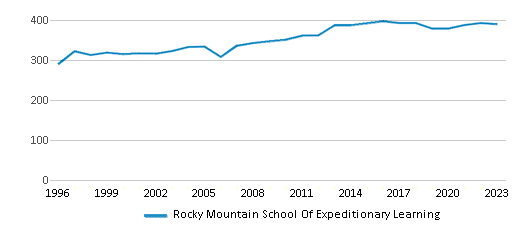
Gender %
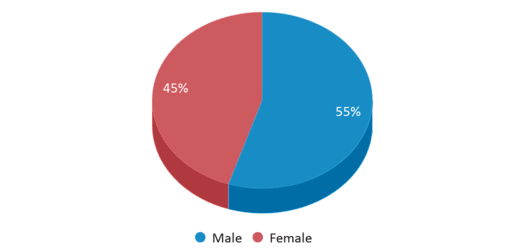
Total Classroom Teachers
26 teachers
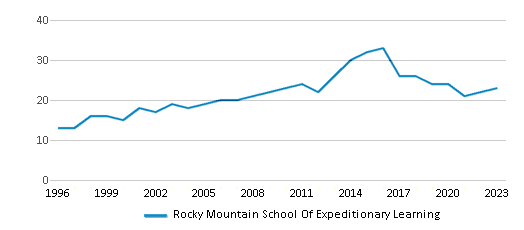
Students by Grade
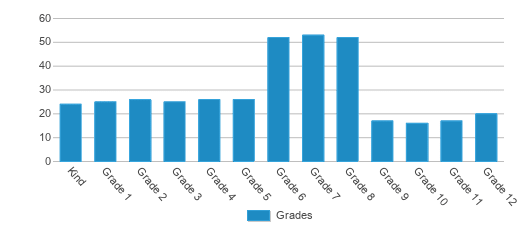
School Calendar
School Rankings
Rocky Mountain School Of Expeditionary Learning ranks within the top 50% of all 1,779 schools in Colorado (based off of combined math and reading proficiency testing data).
The diversity score of Rocky Mountain School Of Expeditionary Learning is 0.39, which is less than the diversity score at state average of 0.62. The school's diversity has stayed relatively flat over five school years.
Overall Testing Rank
#560 out of 1779 schools
(Top 50%)
(Top 50%)

Math Test Scores (% Proficient)
34%
32%

Reading/Language Arts Test Scores (% Proficient)
61%
45%
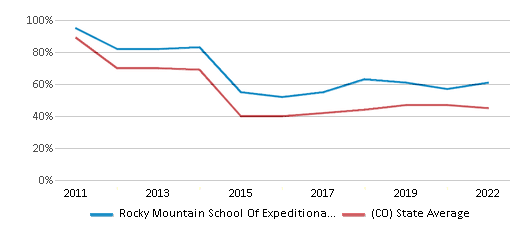
Science Test Scores (% Proficient)
(20-21)45-49%
29%
Student : Teacher Ratio
15:1
15:1
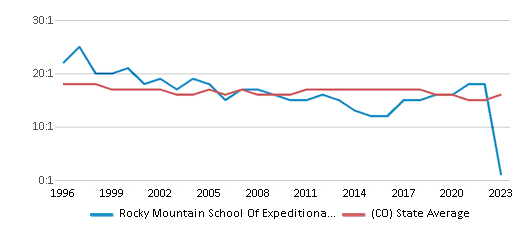
American Indian
n/a
1%

Asian
n/a
3%
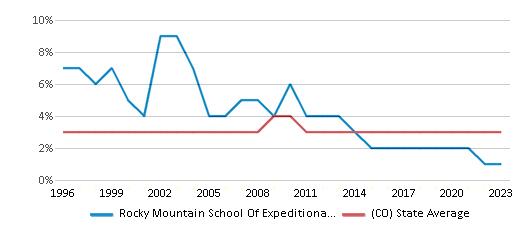
Hispanic
13%
36%
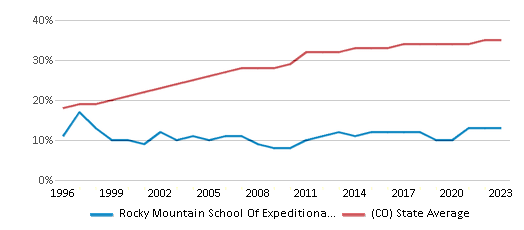
Black
2%
5%
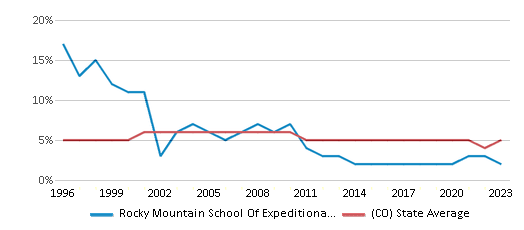
White
77%
50%
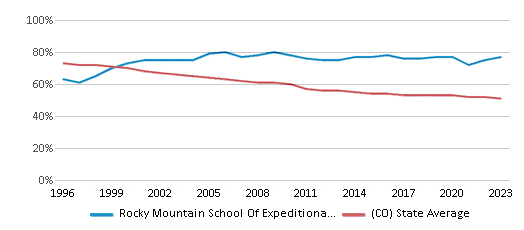
Hawaiian
n/a
n/a
Two or more races
8%
5%
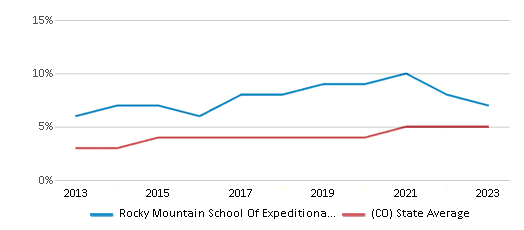
All Ethnic Groups
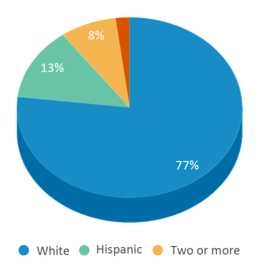
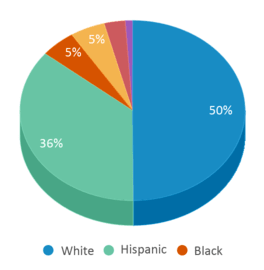
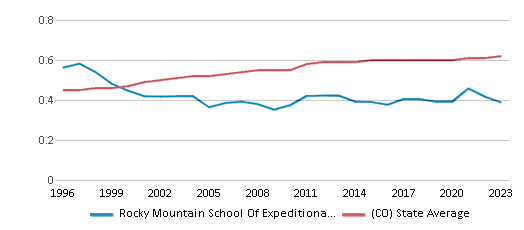
Graduation Rate
≥50%
82%
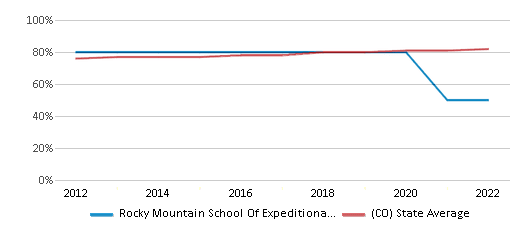
Eligible for Free Lunch
1%
39%
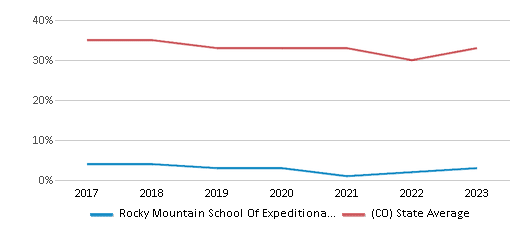
Eligible for Reduced Lunch
1%
6%
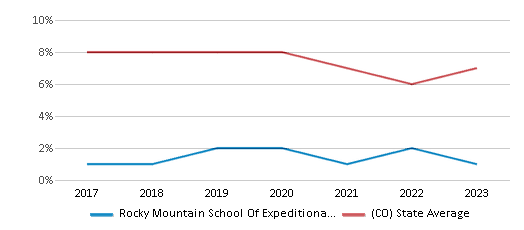
School Statewide Testing
School District Name
Source: National Center for Education Statistics (NCES), CO Dept. of Education
Profile last updated: 02/09/2025
Frequently Asked Questions
What is Rocky Mountain School Of Expeditionary Learning's ranking?
Rocky Mountain School Of Expeditionary Learning is ranked #560 out of 1,779 schools, which ranks it among the top 50% of public schools in Colorado.
What percent of students have achieved state testing proficiency in math and reading?
34% of students have achieved math proficiency (compared to the 32% CO state average), while 61% of students have achieved reading proficiency (compared to the 45% CO state average).
What is the graduation rate of Rocky Mountain School Of Expeditionary Learning?
The graduation rate of Rocky Mountain School Of Expeditionary Learning is 50%, which is lower than the Colorado state average of 82%.
How many students attend Rocky Mountain School Of Expeditionary Learning?
379 students attend Rocky Mountain School Of Expeditionary Learning.
What is the racial composition of the student body?
77% of Rocky Mountain School Of Expeditionary Learning students are White, 13% of students are Hispanic, 8% of students are Two or more races, and 2% of students are Black.
What is the student:teacher ratio of Rocky Mountain School Of Expeditionary Learning?
Rocky Mountain School Of Expeditionary Learning has a student ration of 15:1, which is equal to the Colorado state average of 15:1.
What grades does Rocky Mountain School Of Expeditionary Learning offer ?
Rocky Mountain School Of Expeditionary Learning offers enrollment in grades Kindergarten-12
What school district is Rocky Mountain School Of Expeditionary Learning part of?
Rocky Mountain School Of Expeditionary Learning is part of Denver 1 School District.
In what neighborhood is Rocky Mountain School Of Expeditionary Learning located?
Rocky Mountain School Of Expeditionary Learning is located in the East neighborhood of Denver, CO. There are 18 other public schools located in East.
School Reviews
5 8/28/2019
RMSEL is an incredible school. We have had kids in the school for a decade and they are all thriving. Being a smaller school there are fewer clubs/activities than at larger schools, and the sports programs are limited, yet they still have options. I'd like to see a better music program with continuity in the teaching as well as a greater emphasis on arts as creativity is the foundation of problem-solving. The expeditionary, real-life learning environment is second to none and my kids are learning valuable skills that go way beyond the classroom. I highly recommend RMSEL. Administration and leadership are always working toward a better environment and experience for the students. We were fortunate to win the lottery to get into this school and have become a part of the excellent community. Seriously, it's a great place!
Review Rocky Mountain School Of Expeditionary Learning. Reviews should be a few sentences in length. Please include any comments on:
- Quality of academic programs, teachers, and facilities
- Availability of music, art, sports and other extracurricular activities
Recent Articles

What Is A Charter School?
Explore the world of charter schools in this comprehensive guide. Learn about their history, how they operate, and the pros and cons of this educational innovation. Discover key facts about charter schools, including admission policies, demographics, and funding, as well as what to look for when considering a charter school for your child.

10 Reasons Why High School Sports Benefit Students
Discover the 10 compelling reasons why high school sports are beneficial for students. This comprehensive article explores how athletics enhance academic performance, foster personal growth, and develop crucial life skills. From improved fitness and time management to leadership development and community representation, learn why participating in high school sports can be a game-changer for students' overall success and well-being.

February 05, 2025
Understanding the U.S. Department of Education: Structure, Impact, and EvolutionWe explore how the Department of Education shapes American education, from its cabinet-level leadership to its impact on millions of students, written for general audiences seeking clarity on this vital institution.








